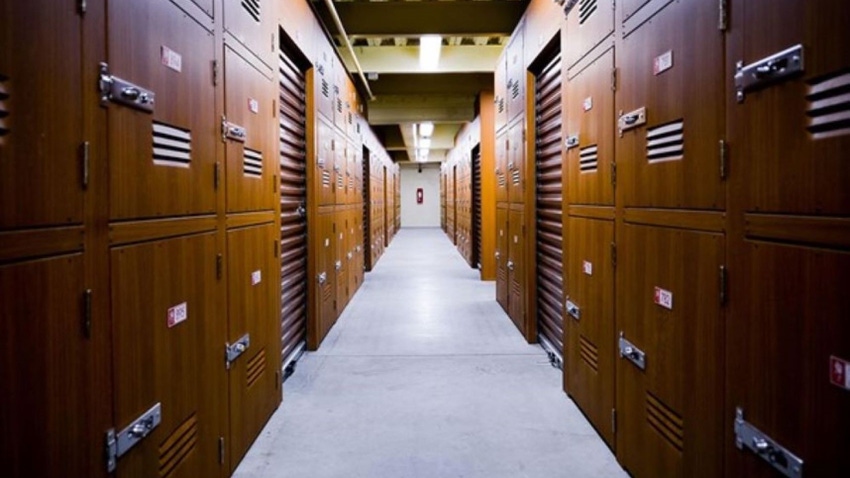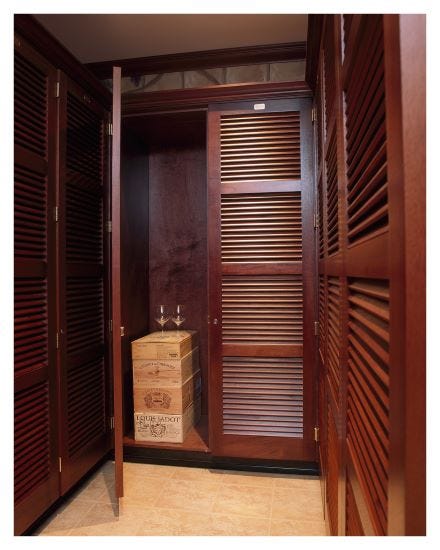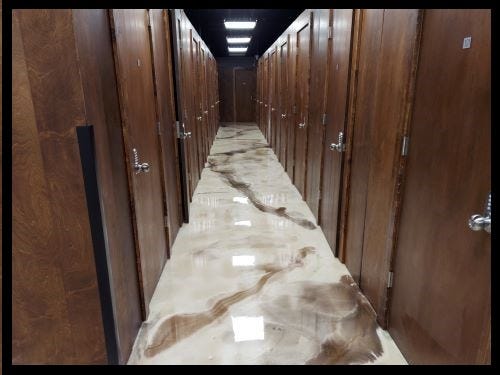Is Your Self-Storage Market Ripe for Wine Storage? Here’s How to Successfully Design, Build and Operate It
Of the many products and services a self-storage operator might consider adding to their core business to generate ancillary revenue, wine storage is perhaps the most sophisticated. To succeed, it has precise requirements. If you believe your market is ripe for this offering, the following insight to development and operation will help you uncork its potential.

Among the many products and services a self-storage operator might consider adding to their core business to create ancillary income, wine storage is perhaps the most sophisticated. It has very specific requirements. Still, in the right market, it can produce robust revenue.
A primary perk of offering wine storage in a self-storage environment is product diversification. The goal is to attract as many types of customers as possible. “The more storage needs a customer can meet at the same location, the better,” says Lenorah Durel, operations manager for Elmwood Self Storage & Wine Cellar in Harahan, Louisiana.
In addition, wine storage often yields higher revenue per square foot than traditional self-storage. One reason is wine enthusiasts are willing to pay a premium for certain physical conditions, says Cameron Sieradzan, brand marketing manager at The Carroll Cos., which operates Bee Safe Storage and Wine Cellar.
At Vineburg Wine and Self Storage in Sonoma, California, locker-style wine-storage units are stacked three high, which means three times the revenue from the same square footage, according to Greg Van Cleave, the facility’s managing member and sole proprietor.
For these and other reasons, wine storage can greatly enhance a self-storage operation, but it comes with unique costs and market needs. Let’s explore the top considerations for starting—and sustaining—a wine-storage business.
Location
Wine-storage operators and developers agree: The success of this niche is closely tied to property location. “It’s all about demand,” says David Meinecke, vice president of Jordan Architects, which has developed several self-storage facilities that offer this service. “It’s vital that ownership assesses the need for wine storage in the market prior to considering the addition. Wine storage can be a great component, but it doesn’t do well in all markets.”
Durel suggests conducting a market study to ensure your location has ample need for the service. An additional way to gauge demand is to evaluate nearby wine-storage operations. “If ownership is seeing other facilities, perhaps even in the 10- to 15-mile radius, doing well and with stabilized occupancy, this is a good indicator that the market could use additional product,” Meinecke explains.
Facility location can also dictate the type of wine storage to offer. For example, Vineburg is in an area known for its vineyards and wineries. To accommodate larger customers, the facility includes warehouse-style storage in addition to individual wine lockers. Clients can store their collections on shelving units and pallets, or in large metal crates. Both options are secured against earthquakes, which are common in the area.

A wine-storage unit at Vineburg Wine & Self Storage in Sonoma, California (Photo courtesy of Jordan Architects)
Carl’s Wine Vault in Naples, Florida, another area well-known for wine collection, also provides commercial or “large collector” units in addition to smaller ones. The former consists of 10-by-10-foot, drywalled rooms. The latter is simply a 10-by-10-foot section of warehouse floor, ideal for clients who need more space, according to Linda Lesh, director of client services.
Design
Looks have become increasingly important in self-storage facility design, and the need for visual appeal is often higher still for wine storage. “Aesthetics matter, as they create a premium image,” Sieradzan says. He advises the use of attractive wine racks to showcase the product being stored and facilitate organization.
A great way to add luxury to a wine-storage area is to use upscale features at the entryway, such as etched glass, decorative door frames and wall art, Meinecke says. “In addition, digital displays reflecting the temperature and humidity of the space help illustrate that you are serious about wine.”
Using custom cabinetry in lieu of metal construction is another nice touch. Elmwood’s units have wooden, slatted doors, for example. Not only are these more extravagant, the slats facilitate airflow, which helps keep the temperature accurate, Durel says.

Mahogany wine lockers at Elmwood Self Storage & Wine Cellar in Harahan, Louisiana
Including an adjacent customer lounge or outdoor patio is a great way to cater to a more affluent tenant. Like many operations, Carl’s offers wine-tasting areas for customer use.
Jordan Architects likes to continue the design theme to the facility exterior, often including wine-country elements like barrels, fountains and lighting. “It’s a good idea to spend a little more money in these areas, as people paying to store their collection typically want to be sold on the facility catering to wine owners as opposed to an afterthought addition to a self-storage facility,” Meinecke explains.
Equipment
Wine storage requires specific physical conditions to ward off spoilage. To appease collectors, restaurants and other clients, this means paying close attention to temperature and humidity. Some facilities offer only temperature control, Meinecke says, but it isn’t enough. Though the necessary climate-control equipment is an added expense, it’s critical to success. When working on your project budget, include funds for equipment acquisition but also for ongoing maintenance.
“There is certainly an added expense with these features. However, the amount of space with these elements is typically nominal compared to the overall size and subsequent operation costs of the facility as a whole,” Meinecke adds.
Vineburg uses a network of sensors throughout its wine-storage area to ensure environmental consistency. “You definitely want to have a monitoring system,” Van Cleave says. “If someone’s wine goes bad, you need to be able to go back and look at your records and see that the temperature stayed the same the entire time they were there.”

Wine-storage units at Bee Safe Storage and Wine Cellar in Greensboro, North Carolina
Building insulation should also be a consideration for wine storage, as it helps maintain those precious air conditions. For this reason, Carl’s added an extra 5 to 8 inches in the ceiling and floor. “It's expensive enough to cool the area, but if you're losing the cool or inviting heat in, you've just shot yourself in the foot,” Lesh says.
A back-up power source is another critical piece of machinery in a wine-storage facility. In the event of an outage, it’s important to be able to maintain the right temperature and humidity. Vineburg uses a propane-powered generator. The facility has experienced several outages in recent years. “You definitely don’t want millions of dollars of wine to go bad on your watch,” Van Cleave says.
Carl’s has both solar- and diesel-powered generators. The former is the facility’s first line of defense, according to Lesh. “When [Hurricane] Ian came and we ended up powerless, the solar kicked in and we had power. It was no problem whatsoever.”
Finally, invest in a strong security system. Wine can be extremely valuable, and your storage clients will want to know you’ve done everything you can to protect their precious collection from damage and theft. Meinecke suggests building the wine-storage area adjacent to the management office, so it’s always in sight. This personal vigilance complements the digital surveillance and coded entry, he says.
Amenities
Adding services to your self-storage operation that complement wine storage is important for attracting potential customers. It can also set you apart from the competition. For example, consider accepting wine deliveries on behalf of tenants. “The delivery drivers bring the shipments directly to the wine unit,” Durel says. “The customer can always call and check to see if it has arrived. It's always fun to hear the excitement in a customer's voice when you confirm [that it has].”
Carl’s also offers a “pack-up and pick-up” service for wine-storage customers. Facility staff will properly pack the tenant’s wine and transport it to the facility in a refrigerated van. “These are people who are in the above-average income [range], and they know the value of their wine, and they don't want to schlep it around,” Lesh says.

Wine-storage lockers at Carl’s Wine Vault in Naples, Florida
Marketing
Once you’ve developed your wine-storage area, how are you going to fill it? This is a unique offering that targets a specific audience, which means your marketing may require a fresh approach.
Many facility operators have grown their tenant base by connecting with other wine-specific businesses and groups. Sieradzan advises reaching out to wine clubs, collectors and local wineries as well as participating in wine-related events. Elmwood has developed partnerships with community wine shops, offering a bonus when one of the vendor’s customers rents a wine-storage unit based on their referral.
You may need to think outside the box with your wine-storage marketing, but you don’t have to reinvent the wheel. Elmwood has found success by simply emailing current customers about its services, Durel says. Lesh attributes 40% of her facility’s wine-storage business to basic signage.
Still unsure about whether this niche is right for your self-storage business? Don’t feel pressured to go all-in right away. “We have seen some facilities bet on wine storage only to later turn the space into standard self-storage or auxiliary office space,” Meinecke says. “When you start small, you’re playing it safe and dipping your toe in the wine-storage market.”
Rachel French is a freelance content writer and copywriter. Her background is in business-to-business media and copywriting for web applications. She’s covered a range of industries and markets including self-storage as well as financial, food and beverage, healthcare, and nutraceuticals. She previously worked for Inside Self-Storage as an intern turned associate editor.
About the Author(s)
You May Also Like





